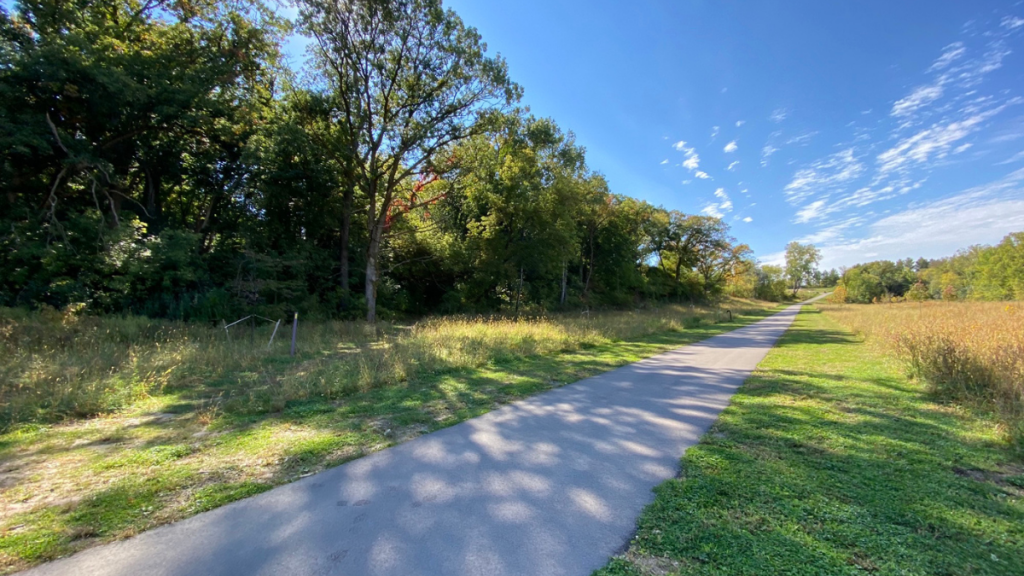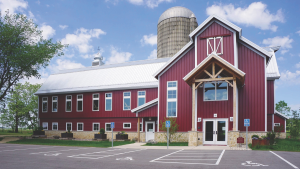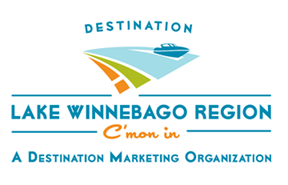Goodwill in the Great Outdoors
04/24/2023
By Ronnie Wendt
There are only so many ways to make trust falls, brainstorming sessions and tabletop events original. Today’s meeting-goers want meaningful team-building exercises and opportunities at events they attend. They want to venture into an outdoor world where they can connect with nature and with each other while performing a service for the greater good. Because people crave team-building with a purpose, planners are seeking out all sorts of group projects with a philanthropic component.
Service projects engage attendees and offer new ways of connecting with each other, says Allison Plumer, the tourism coordinator at the Verona Chamber of Commerce. “They give them a chance to team-build and form connections while doing something else,” she says. “People long to be less formal in their conferences and interact in novel ways.”
The pandemic kept people inside for months and restricted for years. David Lonsdorf, a volunteer with the Ice Age Trail Alliance, says that groups now want to move their service projects outside. He recently developed and hosted an outdoor outing for EnsoData for the Ice Age Trail in Verona. The company brought between 35 and 40 people to remove weeds from a hill on the trail near Badger Mill Creek. “Their staff had been working remotely on the West Coast and in their main offices in Madison, and they were looking for a way to get their employees together and do an outdoor team-building project,” he explains.
Plumer confirms the trend toward bringing attendees outdoors where they can be more active. “People would like to get out in nature and leave the desktop environment behind. They want to work toward a common goal that will distract them from their day to day. People seek a way to connect in an experience that will carry over into their work environment,” she says. “It’s something we see as a trend for conferences and corporate retreats.”
Everybody wins when groups gather for outdoor service projects, adds Valerie Renk, CEO of Habitat for Humanity of Dane County, “With Habitat for Humanity, companies can build their team and culture as they help build a home for someone in need. Unlike traditional activities used to build trust and company culture, teams can make a tangible impact that helps a family, improves the community and makes this world a better place. It’s a win-win-win for individuals, teams and the community.”
Outdoor Opportunities in Every Community
The Verona Chamber of Commerce has taken steps to make service projects more available to groups meeting in their community. “I am working on projects and itineraries that organizations may be interested in,” Plumer says. “Every group has its own set of goals and number of participants, so we need a variety of opportunities for service projects.”
Plumer hopes to cultivate projects for groups of all sizes, from 15 attendees to hundreds. She wants to develop projects that take 1 to 2 hours to complete and some that take several days. “We want to give planners an outline of the things they can do, with this many people, over this timeframe, that will positively impact the community,” she confirms.
Verona provides a plentiful field of opportunities, she adds. One option is the Ice Age Trail Alliance, but the Farley Center for Peace, Justice & Sustainability is also a good place for outdoor service projects. The center in Springdale has over 100 acres of farm and woodlands to maintain. The property offers green burials, a beekeeper training program and an urban garden. The center additionally grows food for the food pantry and farmers markets. Plus, there is a natural art program where people can produce sculptures.
Lonsdorf says many community organizations can benefit from service projects. “All they need to do most times is ask,” he says.
The Ice Age Trail Alliance is headquartered in Cross Plains. The organization has 4,300 members and 15 to 20 people on staff. This organization maintains all 1,200 miles of the National Scenic Trail stretching across Wisconsin. “Volunteers do most of the work and we have a very active volunteer program,” he says. “But we also have a lengthy list of things to do and we cannot always get to everything on that list.”
Plumer agrees, saying, “Community organizations are always in need of more hands on deck and their volunteers are stretched thin.”
Group service projects can bring in new expertise and skills to an organization, too. “Professionals at an event may have skills volunteers do not. Because of that, we may accomplish something more for the community,” explains Plumer. “For groups to count on outside people coming in, even once a year, for a bigger scale project, can take the burden off people in the community who already do so much.”
Building Something New
Most people know Habitat for Humanity as a nonprofit organization that builds or improves homes for families in need. What you may not know is that this organization, which builds 15 to 16 homes a year in Dane County (the county that envelopes Madison), also offers opportunities for group service projects — no experience required, says Renk. “We work with over 300 volunteers a year,” she says. “There are different variations of what they do, but basically, they come help us build.”
Renk says that working on a building is an excellent team-building opportunity: “People don’t want to sit in a conference room. They want to be active outside.” Habitat for Humanity makes it fun and even prints T-shirts for the group. And whether a person’s job at the site is sweeping floors, drywalling or swinging a hammer, they are working as a team.
A supervisor connects group members with jobs based on their skills. One member of a team may know how to build something, another may not. But Renk says that each person can play a role on a job site. “The supervisors get the right people doing the right thing and we always pay attention to safety,” she says. “A person who knows very little can clean up or work directly with a supervisor. A person with more experience can help with rough framing or tile work. We size everyone up and put them to good use.”
For larger groups, Habitat for Humanity can even set up a project in the company parking lot. There is a cost, but with this option, five construction site supervisors can set up stations for employees. “With these projects, volunteers frame up walls that we transport to a job site,” explains Renk.
Later, the entire company can come out for a presentation. “We have a family we are working with talk about what homeownership means for them and why they are in the Habitat program,” Renk says. “The families share how having a home will change their lives.” Getting involved is easy, Renk adds. There is a volunteer coordinator for every Habitat for Humanity chapter. Companies can just call the local chapter to connect with a volunteer coordinator to help plan their event.
Secrets to Success
The secret to successful service projects is in the details, says Lonsdorf. Clearly defined goals and a solid plan contribute to a positive outcome. He says it helps when companies understand what they are trying to gain from the project. “We also need to know the details of their plan,” he says. “Knowing how many people are coming is the hardest part, but the number of people and the time they will be with us helps us plan the tools we need and the size area to work on.”
Lonsdorf has had situations when a planner says 50 people are coming, but only 15 show up. There are also problems when people show up expecting something different. “There needs to be a point person at the company heading up the project,” he warns. “Problems occur when there isn’t good communication.”
A good volunteer coordinator in the organization and in the company drives success. “Good volunteer coordinators can work together to set up a great day. A well-planned outdoor service project benefits everyone,” adds Renk. “People are active, so it supports their health. The projects bring people together who normally don’t work side by side, so it builds company culture and it benefits the community. That’s what makes it so cool.”
Ronnie Wendt is a freelance writer based in Minocqua, Wisconsin.











